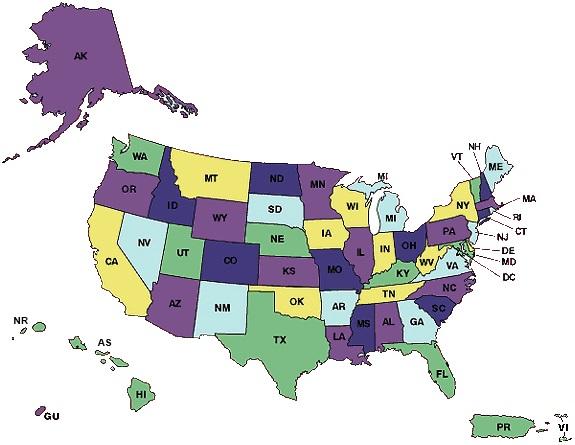Table of Contents
- Economic Impact of Prolonged Restrictions on Local Businesses
- Balancing Public Health and Economic Recovery in Policy Decisions
- Recommendations for Adaptive and Data-Driven Regulatory Frameworks
- Closing Remarks
Amid growing public outcry and mounting economic pressures, officials are being urged to reconsider current regulations in states experiencing unprecedented demand. Industry leaders and advocacy groups alike argue that the existing restrictions are stifling growth and limiting access to essential services. Key sectors such as healthcare, transportation, and housing are particularly impacted, prompting calls for a more flexible, data-driven approach to policymaking.
Stakeholders highlight several critical factors behind the push for reform:
- Population Surge: Rapid increases in population have intensified demand beyond initial projections.
- Economic Recovery: Businesses seek fewer hurdles to sustain operations and create jobs in a competitive landscape.
- Public Welfare: Enhanced access to services is crucial to maintaining community health and safety.
With negotiations underway, decision-makers face the challenge of balancing growth with safety and sustainability, signaling a pivotal moment for policy revision in these high-demand regions.
Economic Impact of Prolonged Restrictions on Local Businesses
Local businesses across high-demand states are grappling with severe financial strain as prolonged restrictions continue to suppress consumer activity. Many small and medium enterprises report drastic declines in revenue, forcing some to reduce staff or shutter operations indefinitely. The ripple effects extend beyond the immediate business owners, touching supply chains and local employment rates, which are vital to community economic health. Key sectors such as hospitality, retail, and personal services face the most acute challenges, jeopardizing the diversity and resilience of regional economies.
Industry leaders and economic analysts emphasize the urgency of reconsidering current restrictions to mitigate long-term damage. Proposed adjustments aim to balance health priorities with economic vitality, including:
- Targeted easing measures based on localized data and vaccination rates.
- Support frameworks to protect workers during phased reopenings.
- Collaboration initiatives between public officials and businesses to innovate service delivery.
Without strategic revisions, the economic fallout risks deepening poverty levels and undermining recovery efforts in these critical regions.
Balancing Public Health and Economic Recovery in Policy Decisions
Policymakers in states experiencing surging demand are increasingly confronted with the challenge of crafting strategies that safeguard public health without stifling economic momentum. Authorities are evaluating data-driven approaches, including targeted restrictions and phased reopenings, to mitigate viral spread while supporting vulnerable industries. Balancing these priorities requires delicate calibration, as premature easing of measures risks triggering new outbreaks, whereas prolonged constraints may deepen economic strain and job losses.
Key considerations influencing decision-making include:
- Hospital capacity and healthcare system resilience
- Vaccination rates and immunization coverage
- Economic indicators such as unemployment figures and business closures
- Community transmission trends and variant prevalence
Recommendations for Adaptive and Data-Driven Regulatory Frameworks
To address the rapidly evolving market demands, regulatory bodies must embrace frameworks that flexibly adapt to real-time data inputs. Implementing dynamic policies-ones that recalibrate restrictions based on current consumption patterns, resource availability, and economic indicators-can help mitigate the unintended economic repercussions on high-demand regions. These systems prioritize continuous monitoring and use predictive analytics to anticipate stress points before they escalate into crises, enabling more proactive rather than reactive governance.
Key strategic actions include:
- Establishing transparent data-sharing protocols among stakeholders, ensuring regulators have access to accurate and timely information.
- Incorporating machine learning models to forecast demand surges and inform calibrated easing or tightening of restrictions.
- Fostering public-private partnerships to leverage technical expertise and infrastructure for responsive regulatory adjustments.
- Regularly reviewing policy impact metrics to refine guidelines and prevent disproportionate effects on vulnerable populations.
Closing Remarks
As pressure continues to build from both industry stakeholders and state officials, it remains to be seen how regulatory bodies will respond to calls for revising restrictions in high-demand states. The evolving landscape highlights the need for balanced policies that address economic growth while safeguarding public interests. Stakeholders will be closely monitoring upcoming legislative sessions and regulatory reviews to gauge the potential impact of any changes on local markets and consumers.Check Our Other Blogs
- StunGun – Your Trusted Source for Stun Guns, Laws, and Self-Defense Tips
- PepperSprayLaws – Your Trusted Resource for Pepper Spray Information
- StunGunLaws – Your Trusted Guide to Stun Gun Legality and Safety




